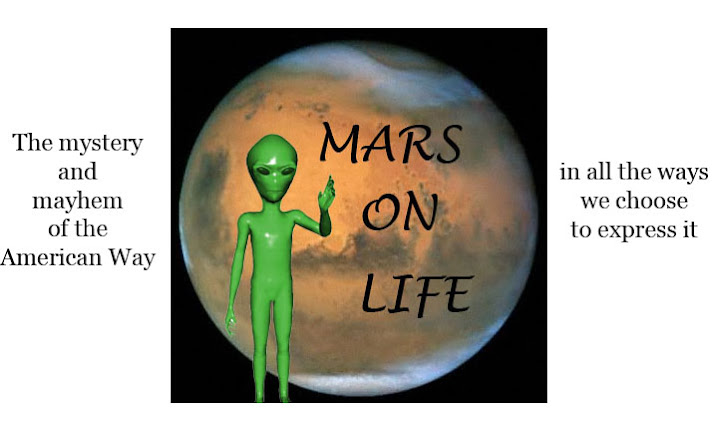
In October of 1969, the Rolling Stones flew into Los Angeles to prepare for the US tour that would end in the bloodstain of Altamont. The Stones were touring in support of the soon-to-be-released Let It Bleed and America was a nation in transition.
The Stones hadn't toured the US since 1966. Three years later, things had changed both for the band and for the country. Brian Jones had died, drowned in his swimming pool in July of that year. Musically, the band was far more aggressive and ravening, feeding on a new imagery of violence and unrest. Their darkened mood matched America's own. We were then a country jittery from political assassinations and race riots, anti-war demonstrations and the Manson murders. There was a war on and we were still a long way from consolation.
The Stones hit LA like a bolt of lightning. The tour would be the granddaddy of all arena rock to come and was for a brief moment the hottest ticket in town. In a city that normally thrived on its ability to be unimpressed, the Stones were subject to fervent hero-worship. Taking up residence in the DuPont mansion and at Stephen Stills' Topanga Canyon house, the band prepared to kick off the tour in Fort Collins, Colorado, on November 7th.
Aside from the band the touring party included the writers Stanley Booth and Michael Lydon and the photographer Ethan Russell. Booth would chronicle the tour in The True Adventures of the Rolling Stones and Russell's photographs would become the ultimate visual souvenir.
Before Perez Hilton and TMZ, before iTunes and YouTube, before information became blasé and instant gratification the popular drug of choice, there was only distance and anticipation. For a music fan, that meant waiting a couple of years for an album to be released and in the meantime mailing off a few bucks for a subscription to Rolling Stone or Creem. If you lived within spitting distance of a major city and didn't mind camping out at the local Ticketmaster, you might even get to see a concert. Blink, though, and you'd miss it. In most cases, still photography provides the only serious visual record and for many it would be the only chance to get an idea of the band in live concert.
In information's dark ages, the camera's eye built an illustrative framework by which music might be augmented and dissected. Chances are you've seen some of Russell's photographs; they remain the definitive images of the band in the middle of its hottest streak. More importantly, they capture a civilization on the verge of extinction and that civilization's lack of awareness of the finality of its own demise.
Russell took some of the last photographs of Brian Jones; the famous photo of Jones in the flag shirt, wielding the butt of a rifle, is his. His images of the Rock and Roll Circus were part of scant documentation of that event before the film was finally released in 1996.
Recently, Russell compiled the photographs of the 1969 tour into Let It Bleed, The Rolling Stones 1969 U. S. Tour, a doorstop collection of images and text that provides the definitive visual accompaniment to the live recordings of Get Yer Ya-Ya's Out. Through April 4th, many of the prints are on exhibit at the San Francisco Art Exchange.
The first thing you notice about the photos is how young the Stones were, and yet they wear expressions of world-weariness, of having seen it all and having it become ordinary, or, as Jagger would later opine, "Just another mad, mad day on the road." Until Altamont, that is. The road as captured by Russell is a vast and empty space littered with propeller aircraft, anonymous fans, cheap backstage furniture, and beer bottles. Outside of its large cities, America was full of provincial potholes, each one every bit as much a "sleepy town" as the London of "Street Fighting Man." Glamour also doesn't look quite so glamorous when it's redundant, and yet you get the sense that nothing much happened before the Stones came to town, and nothing much would happen after they left.
You very quickly learn about our innocent and trusting nature: a four-foot-high stage separates the band from the audience, a detail that seems impossibly reckless in these days of anxious security. Thanks to this, the concerts seem more intimate; there isn't a JumboTron in sight and fans in the front row could reach out and touch Jagger's concho-studded pants as he taunts at the lip of the stage. Jagger was an entertainer who understood burlesque, who got the tease. When the band would later play enormous coliseums and erect the fourth wall for good, most of that old-fashioned showmanship was lost. A good part of the entertainment value of the '69 tour was watching Jagger whip the crowd into a frenzy and dare them to rush the stage; you can see that in the ecstatic, transported faces of the fans. Russell excels at capturing movement and direction. You understand the meaning of spectacle in the Roman sense and you also understand why concerts did away with festival seating after the stampede at the Who concert in Cincinnati.
We were a deeply flawed and spontaneously hopeful society.
The core of the exhibit is performance: Here's Jagger in the hot spot of Midnight Rambler, flaying his belt on the stage, lips pursed in a primal grunt. And Richards tuning his guitar backstage while wearing Anita Pallenberg's Biba cardigan. There are soft, non-business moments as well: Jagger holds the infant Seraphina Watts as Richards lounges on the lawn behind him; Jagger in his uppercase Omega shirt has a backstage chat with Chuck Berry. Mick Taylor is mute, Charlie Watts is wry, Bill Wyman is Bill Wyman, and the ghost of Brian Jones is nowhere to be seen.
The whole tour seemed to run at a high metabolism that, until Altamont, lacked histrionics. When you see the Altamont photos, Jagger hunched and fretting, you grasp what it was like to briefly walk upon the surface of the sun. And get burned.
The free concert had been a miasma for the Stones ever since it was announced. Here, the photos change from swagger to malcontent. Bill Wyman is delayed in arriving, the Angels have punched out Marty Balin and then someone slugs Jagger himself as he exits his helicopter. Where the previous photos seem like not just a historical record but an annal of immortality, at Altamont they become mortal. Even without knowing the history of that event, there is a sense of something critical about to happen; it's in the way the Angel hovers between Jagger and Watts as they wait inside the performers' tent. The biker's stormy intensity, his fear of not being in total control, rises off the print. Russell also does superb work in recording the electricity of emotion.
they wait inside the performers' tent. The biker's stormy intensity, his fear of not being in total control, rises off the print. Russell also does superb work in recording the electricity of emotion.
As a collective narration, the exhibit cannot help but be a ruminative one. The photos themselves, however, are neutral. Russell has merely captured the human edge to seminal cultural events. Even as he draws you into the action, Russell has no viewpoint and he makes no statement. That's up to the individual observer. You may end up wondering how we ended up boxed into a corner and gasping for air. You will certainly understand how mundanity led to our need to release pent-up energy in forms that could turn deadly.
The Stones returned to America in 1972 without any chinks in their armor, but America had been repaved with a new sophistication. Once wounded, we were no longer as trusting and our tendency towards fetishizing our idols was diminished. In their prime, the Stones were a great band--the greatest rock and roll band in the world, they claim--but ultimately their blood ran just as red as ours.
Let It Bleed, The Rolling Stones 1969 U. S. Tour, at the San Francisco Art Exchange, 458 Geary Street, San Francisco, CA
Let It Bleed, the book, published by Rhino.
Images © Ethan Russell, via Rolling Stone.com
Monday, March 17, 2008
It's Just a Shot Away
Subscribe to:
Post Comments (Atom)









7 comments:
This post really filled a gap in my knowledge about American rock history. I can't say I know too much about this time, at all. It's so funny how my generation's knowledge begins and I guess ends with Nirvana and grunge, and well, contemporary parodies of that 90s era...
Great article, I saw The Stones in concert when they came to South Africa in around 1994/95, somewhere around then. It was an amazing experience.
oh how i love all those vintages photographs that would be awesome in my bathroom
When the Stones started touring again to great acclaim in the late 80's I couldn't understand the hoopla. Weren't these guys dinosaurs? And then I started watching Wes Anderson movies, and it all fell into place.
I want to live in the 60's so badly. Stones concerts dressed like Le Samourai? Be still my beating heart.
Your daily write-ups read miles better than the essays I took days to write in undergrad. Insightful, as always. And a haunting photograph of Mick at the top. It made me look twice.
Sm., thanks for the kind words!
I loved that photo of Mick. The whole exhibition is wonderful and I wish you and Thom could see it, but I don't think it's coming to Canada in the near future.
Though I was too young at the time to know how the Stones were affecting the world, after reading this, I feel less left out. They were an entity, but I didn't understand it until years later. Thank you for taking me back.
Post a Comment